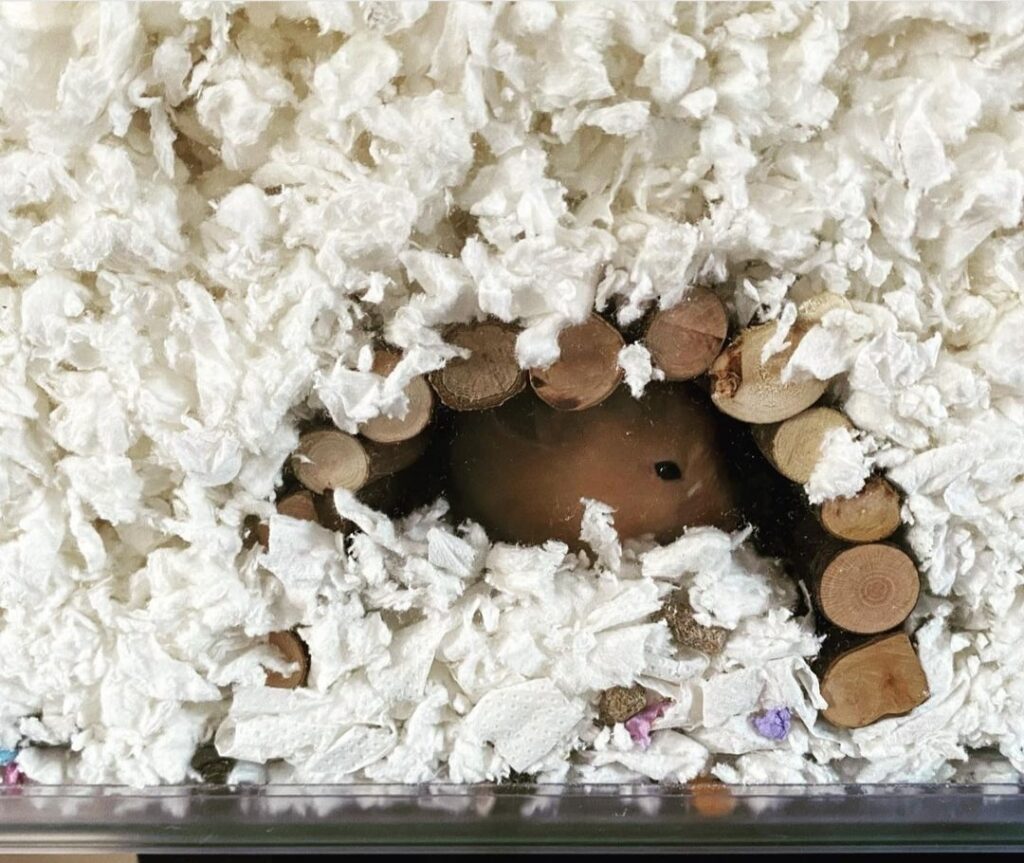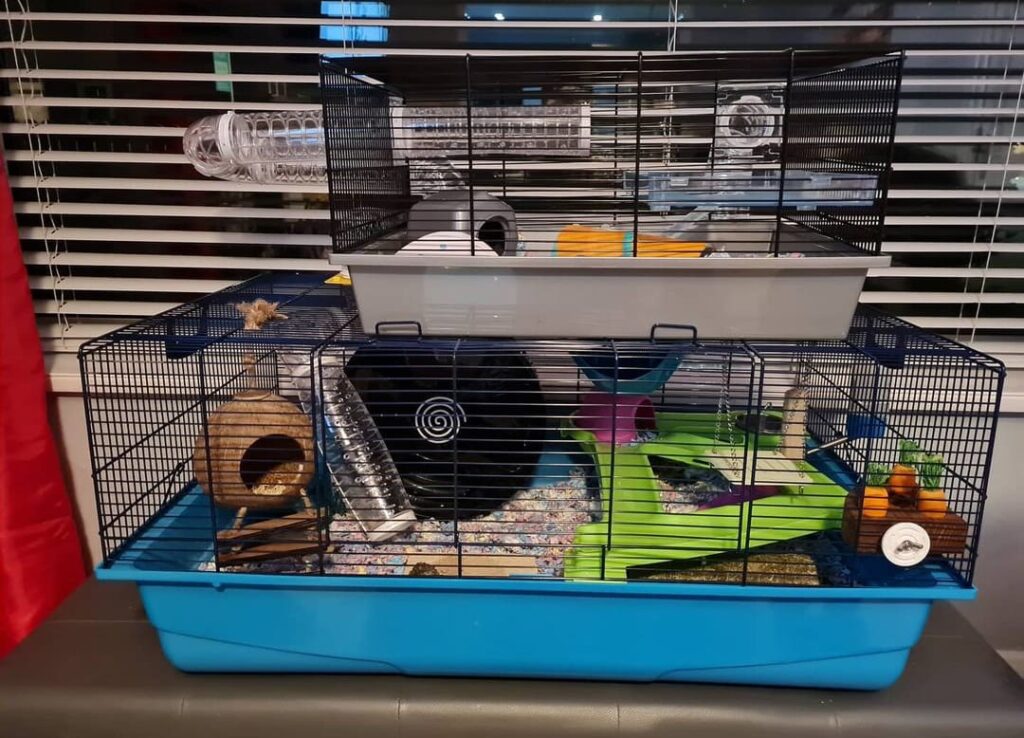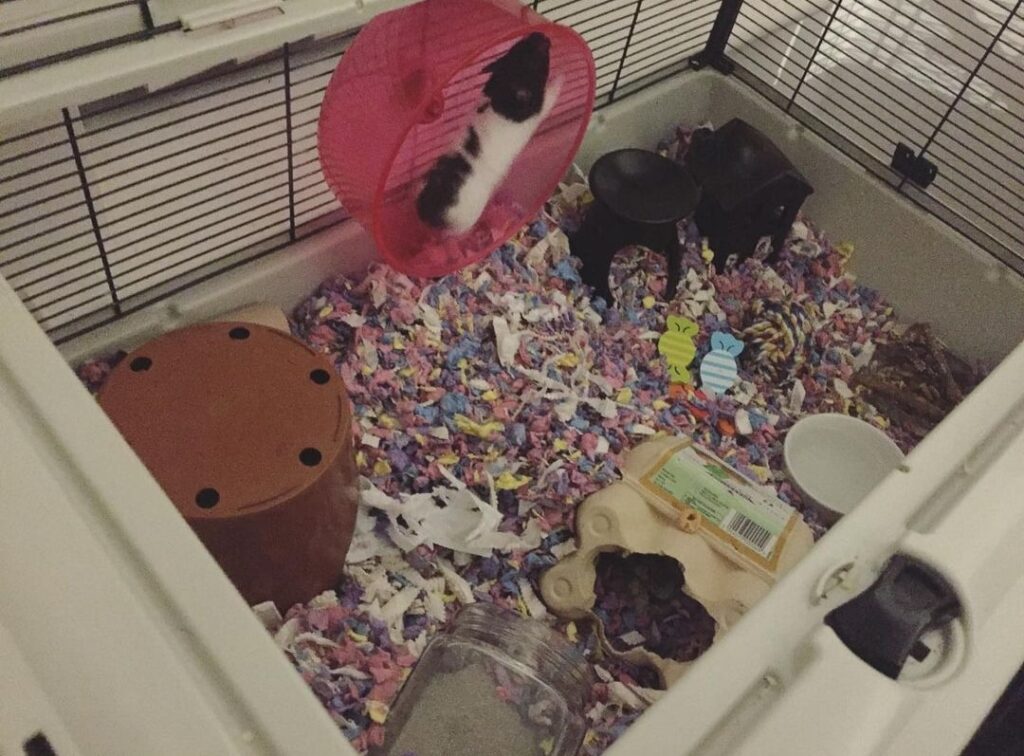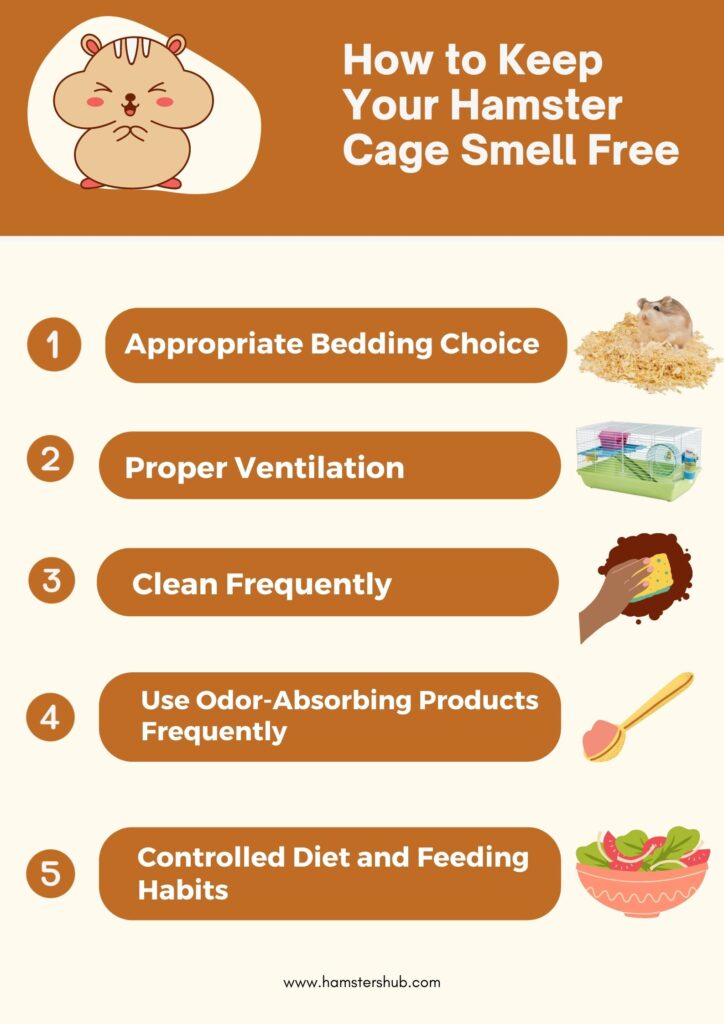Hamsters are adorable little creatures, but their owners often face the challenge of keeping their furry friend’s cage odor-free. It can be quite a task to maintain a fresh-smelling environment. As hamsters are small pets with sensitive noses, and their cages can quickly become smelly due to waste and food remains.
Moreover, providing a fresh and pleasant environment is essential for your hamster’s health and happiness. So, if you’re worried about how to make a hamster cage smell-free? Fret not! We’ve gathered five unique ways to help you combat any unwanted odors and create a happy and healthy habitat for your tiny companion.
From innovative cleaning techniques to eco-friendly hacks! This guide will show you how to make your hamster’s home a sweet-smelling sanctuary that both you and your pet will love. Let’s dive in and discover the secrets to a smell-free hamster haven!
Is It Normal For Hamster Cage To Smell?
Yes! Hamsters’ cages can get a bit smelly because they do everything in their cage – they eat, poop, and pee in there. So, if the cage isn’t cleaned enough or the bedding isn’t absorbent, that can make it smelly.
Plus, the reason why their cage might stink may also be because of the pheromones they release from special scent glands. It’s natural for them to do this to mark their territory or attract mates, but it can have a musky smell.
5 Ways To Keep Your Hamster Cage Smell Free
Fear not! Keeping your furry friend’s living space fresh and odor-free is easier than you think! Here are five simple and effective ways to maintain a smell-free hamster cage:
#1 Appropriate Bedding Choice

Using high-quality bedding is crucial in maintaining a clean-smelling cage. Opt for bedding made from natural materials as they absorb moisture and odors more effectively. According to a study conducted by the Journal of American Association for Laboratory Animal Science (JAALAS) dust free bedding significantly reduces ammonia levels and unpleasant smells.
That’s why it is recommended to choose bedding materials that fulfill these criteria. Some of the best options for such bedding are as follows:
- Commercial bedding (nesting fiber) is designed specifically for hamsters. Some of these beddings may contain chlorophyll, which helps reduce odors. They are often made from wood pulp or various plant materials.
- Aspen shavings: The only type of wood shavings that are safe and suitable for hamsters. Additionally, they have good odor-absorbing capabilities.
- Fresh mowed or chopped hay can also be used as bedding, but it’s crucial to ensure it’s not moldy.
- Granulated paper bedding is another good option as it is absorbent without sticking to the hamster’s fur.
#2 Proper Ventilation

Adequate ventilation is vital to prevent stale air from lingering in the hamster cage. Research indicates that proper airflow reduces odor buildup by up to 70%. So, position the cage in a well-ventilated area, away from direct sunlight and drafts, to maintain a fresh environment.
Not only that, a recent study reported that cage volume has a significant impact on controlling the quality of air than that of floor space. That’s why if the cage is smaller, there are greater chances of ammonia buildup and odor. The odor and smell may become worse if the cage has 2-3 hamsters in it.
Therefore, it is advisable to use a larger cage for your hamster. Larger cages offer more room for your hamster to move, play, and use separate areas for various activities. Which can help minimize the concentration of odor-causing substances.
For beginners, here is a guide about where to place your hamster cage and where not?
#3 Clean Frequently

Regular cleaning is crucial to prevent the buildup of waste and odor in the hamster cage. But that doesn’t mean cleaning the whole cage every day. A study on Syrian hamsters revealed that a full cage clean caused a significant increase in heart rate by approximately 150 bpm, taking nearly an hour for the hamsters to return to a calmer state.
That’s why it is advised to observe your hamster’s behavior to determine the spot they consistently use as a bathroom. Typically, this will be a corner of the cage. Only spot clean that area daily as follow:
- Carefully remove the soiled bedding from the designated bathroom area using a scoop or a small shovel-like tool.
- Take out only the dirty portion to avoid the smell, and replace it with clean bedding.
Daily spot cleaning significantly reduces the presence of ammonia, a major contributor to unpleasant smells. Removing soiled bedding and uneaten food on a daily basis helps maintain a fresh and hygienic living space for your pet.
While spot cleaning is essential, it is equally important to perform a more thorough cleaning of the entire cage after 2-3 weeks.
#4 Use Odor-Absorbing Products
Place odor-absorbing products, such as activated charcoal pouches, in your hamster’s cage. These products effectively trap and neutralize odors, keeping the cage smelling fresh.
You can also use baking soda instead of activated charcoal as it has odor-absorbent properties as well. But sprinkle a small amount of baking soda in a corner of the cage or mix it with the bedding to help absorb and control odors. Ensure not to use too much, as it may cause irritation if inhaled in large quantities.
Moreover, you can also consider using small air purifiers or filters in the room where your hamster’s cage is located. These devices can help remove airborne particles and odors, contributing to a cleaner and fresher atmosphere around the cage. Remember to replace them as per the manufacturer’s instructions to maintain their effectiveness.
#5 Controlled Diet and Feeding Habits
Managing your hamster’s diet and water supply plays a significant role in controlling cage smell. Pay attention to your hamster’s diet and avoid overfeeding fresh fruits and vegetables, as they can lead to smelly droppings. Instead, opt for balanced commercial hamster food.
Additionally, change the water supply daily to prevent the growth of bacteria and keep your hamster hydrated with fresh water. A well-managed diet and water supply helps reduce odor-causing waste and maintain a fresher, more pleasant environment in the hamster cage.
Here I’ve explained what you should feed to your hamster, so you must checkout.
Conclusion
Maintaining a smell-free hamster cage is essential for the well-being of your pet and the comfort of your living space. By incorporating these five easy and practical methods into your hamster care routine, you can ensure a clean and odor-free environment for your pet.
Regular cleaning, quality bedding, proper ventilation, controlled feeding habits, and spot cleaning are key to maintaining a fresh and enjoyable living space for your furry companion. Remember, a clean and odor-free cage leads to a happier and healthier hamster!

Similar Posts:

